Oscillation DefinitionThe oscillation of an item is the recurrent switching back and forth between two locations. It is often called periodic motion since it appears to return to itself constantly. For instance, an up-and-down motion caused by a spring's weight or a sine wave caused by a pendulum swinging from side to side. 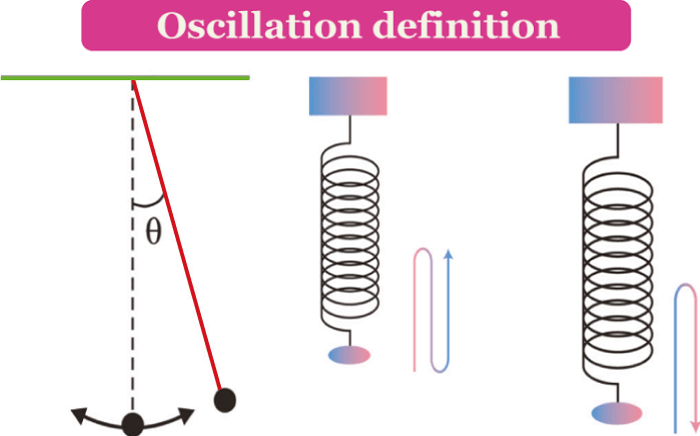
The oscillation's center is a mean value or equilibrium point. This motion may also be referred to as periodic motion. An oscillation is viewed as a single finished movement during the period, regardless of whether it is an up-down or side-to-side activity. This motion is called oscillatory or vibratory when a body travels back and forth (to and fro) around a given location or point after a regular period. "Means position" or "equilibrium position" denotes the fixed location around which the item oscillates. While every periodic motion is oscillatory, not all oscillatory motions are periodic. The oscillation of a mass hung from a spring, and the vibration of a sitar wire are two instances of oscillatory motion. What is Oscillation?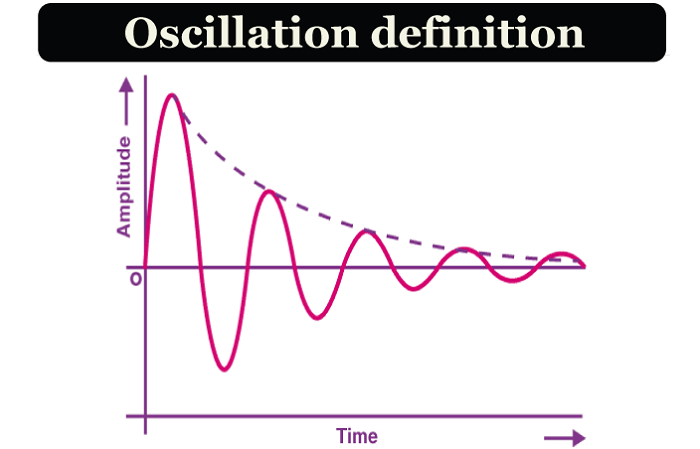
Any quantity or measure repeatedly varying about its equilibrium point in time is called oscillation. Another definition of oscillation is a periodic variation in a substance's value between two values or around its core value. When an item mechanically oscillates, the concept of vibration describes this. Oscillations, however, may also be found in dynamic systems or, more properly, in every branch of research. Even the heart itself oscillates when it beats. On the other hand, oscillators are entities that move about an equilibrium point. Oscillations Examples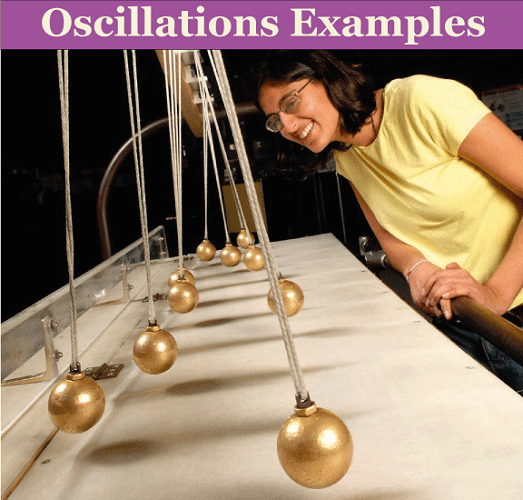
The oscillations generated by the tides and a clock's fundamental pendulum are two of the most common examples. Spring movement serves as another illustration of oscillation. Some instances of oscillations include the vibrating of the strings of stringed instruments like the guitar. The back-and-forth motion of the pendulum causes the oscillating movement. Vibrations are mechanical oscillations. By oscillating between two positions around its center point, a particle is said to be vibrating. Oscillation also identifies the motion of a spring. The spring continually goes lower and then upward, causing an oscillating action. A sine wave best illustrates oscillation. The wave, in this instance, oscillates between two locations around a center value. The oscillation's amplitude, measured in height or the maximum distance across which it may occur, and period, which refers to the time it takes for one complete cycle, are both terms. The frequency represents how many complete cycles occur in a second. The period's reciprocal is frequency. F = 1 / T F represents the oscillation's frequency. T represents the oscillation's duration of time. Motion Oscillation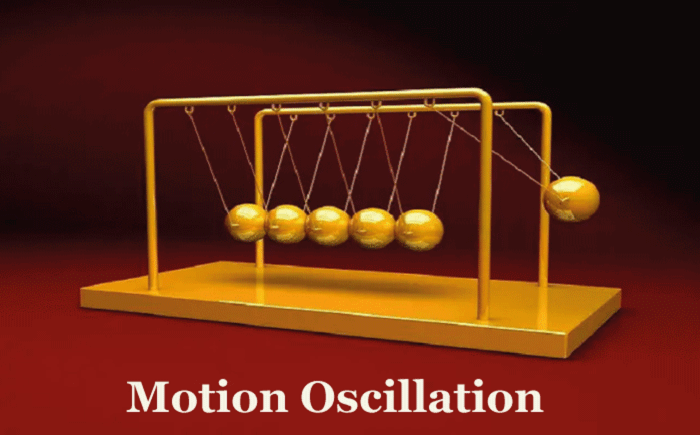
An oscillation motion occurs when an item swings in a mechanical system from one side to the other. Potential energy often transforms into kinetic energy during this kind of action. Each cycle of an oscillation motion is complete. Kinds of Oscillation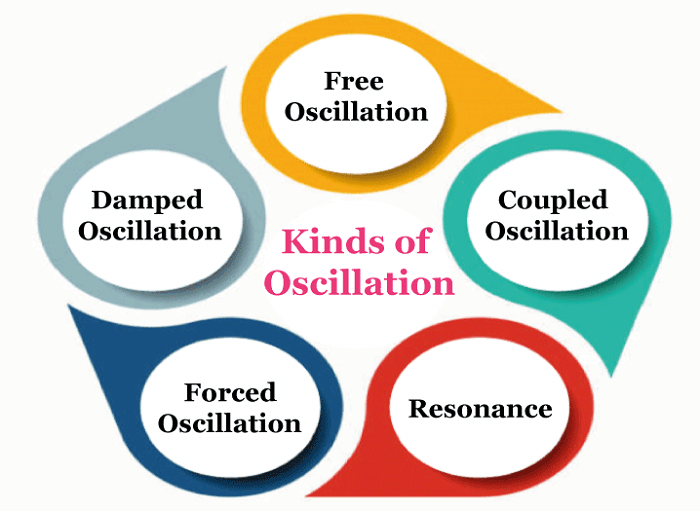
Several different forms of oscillation may be identified. 1. Free OscillationFree oscillation is the term for an oscillation that occurs when the body vibrates at a frequency on its own. Its amplitude and period are fixed such that no outside force is required to cause the oscillation. A tuning fork's vibrations are an illustration of free oscillation. 2. Damped OscillationDue to the environment's constant damping forces, most free oscillations ultimately stop. Damped oscillation is a term used to describe an oscillation whose frequency decreases with time. External elements like air resistance or friction that create damping allow the oscillation's amplitude to decrease gradually, causing the system to lose energy. A damped oscillation is declining, like a pendulum. 3. Forced OscillationWhen anything oscillates due to an external period force, this is known as a forced oscillation. The amplitude in this situation suffers from dampening, but because it is given external energy, it doesn't change. Foot movements a youngster makes to move the swing are examples of forced oscillation. 4. ResonanceResonance is a phenomenon that occurs when a system's frequency matches its inherent frequency. When the system's damping decreases approaching resonance, the force oscillations' amplitude increases. A wider reply is received to drive different frequencies when there is greater damping. When the external force's (driver's) frequency matches the oscillator's natural frequency, the driven and driven states are in a resonance condition (driven). The system is in resonance when there is the greatest energy transfer from the driver to the driver. The motion's amplitude, therefore, reaches its peak. Resonant frequency refers to the driver's resonance frequency in that state. 5. Coupled OscillationA coupled system consists of two or more oscillations connected so that they can exchange energy with one another. Coupled oscillations are the name given to such a system's oscillations. Examples of interconnected systems include the following
Next TopicPhotosynthesis Definition
|
 For Videos Join Our Youtube Channel: Join Now
For Videos Join Our Youtube Channel: Join Now
Feedback
- Send your Feedback to [email protected]
Help Others, Please Share










